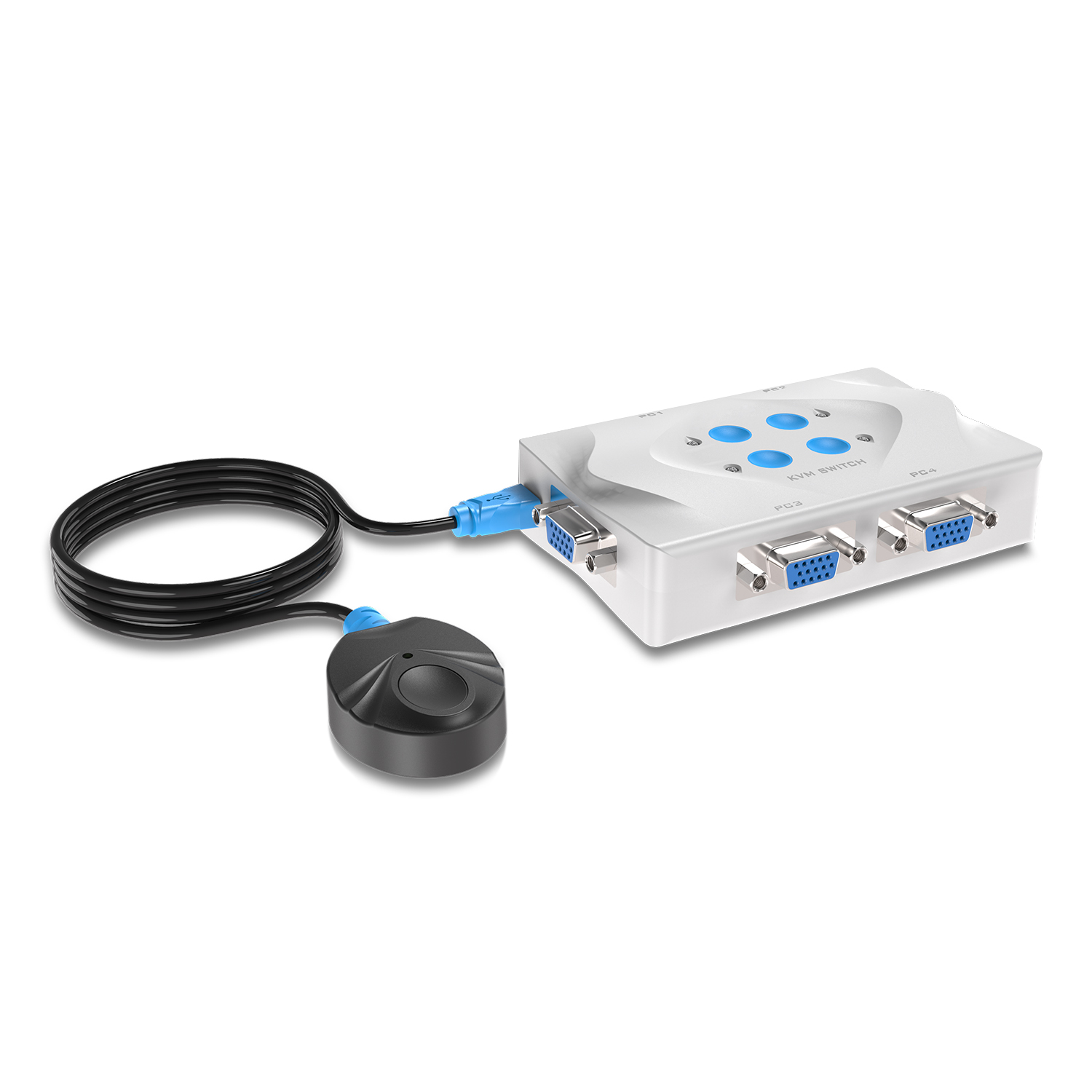



Of the switches I tested, the Flip will probably suit the needs of most laptop users. But to have a proper ergonomic setup for both computers, without having to invest in multiple peripherals, you need a KVM switch. Of course, you could simply use your laptop’s keyboard, monitor, and input device.

If you might benefit from frequently using your laptop and another computer in your office, you should consider a KVM switch. Iogear sells lots of other KVM switches, too. And you can usually find it online for less than the Flip DVI switch. The MiniView is also the most compact of the three KVM switches I tested. However, Iogear’s KVM switch includes a connection to share a microphone between two computers, which the Flip lacks. I had to choose between connecting a keyboard or my trackball.
#Kvm switch for mac laptop and desktop free#
Because I needed two free USB ports, one for the mouse and one for the keyboard, I couldn’t fully test the MiniView on my Air. However, Iogear’s MiniView Micro DVI-D KVM ($70 and up online), which is similar to Belkin’s Flip, requires separate USB connections for your keyboard and mouse. That’s an advantage, given that many laptops have only two or three USB ports–and the Air only has one. The net effect is that you’re using only one USB port to connect two USB devices (keyboard and mouse). To share a USB keyboard and mouse between multiple computers using the SOHO or the Flip, you connect a USB cable from the KVM switch to a USB port on each shared computer. I didn’t have any problems connecting either the Air or the Dell to the Flip KVM switch, as I did with the SOHO. The DVI version of Flip, which I tested, is the most expensive of the various Flip KVM switches. Belkin sent me a replacement KVM switch and remote, which worked properly. Unfortunately, the remote control button on the first Flip I received didn’t work. You switch between computers with a small, hockey-pucked shaped remote control or by using free Flip software, which must be installed on each computer that’s sharing peripherals. Pushing the SOHO console button with blue trim lets me use the keyboard, monitor, and mouse with my Dell desktop. Then, when I pushed the SOHO console button with the green accent, the keyboard, monitor and mouse switched to the Air. For the Air, I used the SOHO monitor/USB cable with green connection screws for the Dell, I used the cable with blue connection screws. The goal is to make it easy to connect peripherals properly to the console, and then to switch between computers by pushing a button on the console. The SOHO cables are color coded to match the console’s buttons. A separate cable combines microphone and speaker connections. Each SOHO cable combines monitor and USB connectors in one cable. Then I used the SOHO’s cables to connect my Air and Dell to the switch. I connected my Dell 20-inch flat-panel display, a USB keyboard, and a USB trackball into the SOHO’s console. The SOHO switch lists for $269 but can be found online for under $200. You can share one microphone and set of speakers between all your connected computers. It also allows you to connect up to two USB 2.0 peripherals, such as external hard drives and printers. I tested Belkin’s SOHO KVM Switch that lets you connect up to four computers with DVI video. The models differ by how many computers you can connect (two or four), which type of monitor input is supported (VGA or DVI), and which type of peripheral is supported (USB and/or PS/2).
#Kvm switch for mac laptop and desktop how to#
You can find out how to avoid them below.Belkin’s SOHO KVM switches come in many variations. These cookies and other technologies capture data like your IP address, when you viewed the page or email, what device you were using and where you were. We use various advertising partners, including Amazon, Facebook, and Google. These cookies are used to track your activity on the BenQ website and other websites across the Internet, help measure the effectiveness of our advertising campaign and deliver advertisements that are more relevant to you and your interests. See list of performance and advertising cookies To opt-out of Hotjar collecting data, you can disable tracking completely by following link:. To opt-out of SessionCam collecting data, you can disable tracking completely by following link:. To opt out of certain ads provided by Google you can use any of the methods set forth here or using the Google Analytics opt out browser add-on here. You can control the information provided to Google, SessionCam and Hotjar. If you want to opt-out of advertising cookies, you have to turn-off performance cookies. We also use Google Analytics, SessionCam and Hotjar to track activity and performance on the BenQ website. These cookies help to improve the performance of BenQ. Performance cookies and advertising cookies


 0 kommentar(er)
0 kommentar(er)
